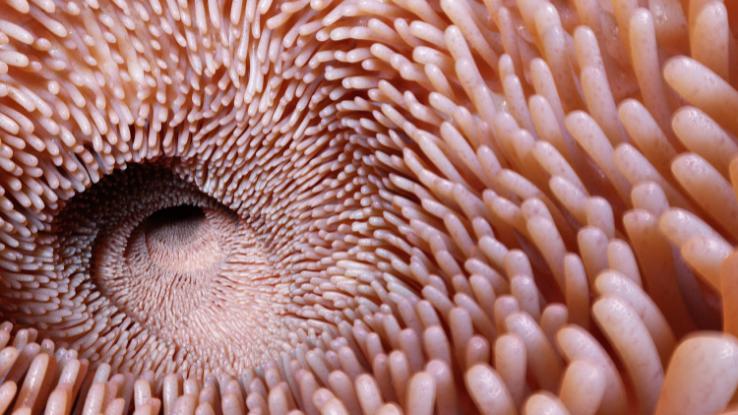Celiac Disease 101: Here’s Why This Condition Requires a Gluten-Free Lifestyle

Celiac disease is a chronic inflammatory bowel disease that often manifests in people with a genetically determined risk. The prevalence of celiac disease in the United States is about one percent, but it has risen in the last few years. Most often, symptoms may include abdominal pain and/or discomfort and diarrhea, but, at times, it can begin more silently, often in association with iron deficiency anemia or osteoporosis. However, due to this variance in symptoms, it’s often difficult to diagnose celiac disease in patients early on.
Although there is no cure for celiac disease, one’s symptoms can be effectively managed by following a gluten-free diet. In fact, following a gluten-free diet is a must for individuals who are diagnosed with celiac disease since they have an increased risk of complications, including intestinal malignancy and severe malabsorption.
Symptoms Associated With Celiac Disease
In adults, symptoms of celiac disease can vary dramatically from one person to another. In fact, for some individuals the well-known gastrointestinal symptoms may be absent. Furthermore, some individuals with celiac disease may be asymptomatic, while others may suffer from chronic diarrhea with abdominal pain and discomfort. Others still may experience more general symptoms, such as fatigue.
Symptoms of celiac disease in infants may include, but are not limited to, the following:
- Abdominal bloating
- Abdominal pain
- Chronic diarrhea
- Vomiting
- Constipation
- Paleness
- Fatty stool
- Weight loss
- Malabsorption
Moreover, some silent presentations include iron deficiency anemia and osteoporosis.
Less commonly, adults may have neurologic symptoms — seizures, numbness, or tingling — or dermatitis herpetiformis, an itchy skin rash. Chronic and sustained damage to the intestines caused by celiac disease can result in the malabsorption of nutrients and related complications. Left untreated in infants and children, malabsorption may result in failure to thrive; delayed growth and short stature; delayed onset of puberty; and dental enamel defects of the permanent teeth.

What Causes Celiac Disease?
Physiologically, gluten consumption causes the body’s immune system to overreact and damage the villi — hair-like projections that aid in the absorption of nutrients — of the small intestine. Without healthy villi, the body is unable to absorb the nutrients necessary to sustain growth and overall health. Instead, nutrients — such as fat, protein, vitamins, and minerals — are eliminated from your stool.
The exact cause of celiac disease is unknown. However, it is known that both environmental and genetic factors contribute to the onset of celiac disease. In some cases, an initial flare-up of celiac disease may be caused by pregnancy, childbirth, viral infection, or severe emotional stress. To some degree, experts believe celiac disease is inherited and, therefore, may be passed on from parents to their children.
Diagnosing Celiac Disease
A definitive diagnosis should be made before one starts following a lifelong gluten-free diet. To diagnose celiac disease, a doctor will initially perform a comprehensive physical exam and ask about your symptoms and medical history. Your doctor may order additional tests, including:
- Blood Test: A blood test can detect if specific antibodies, such as anti-tissue transglutaminase or anti-endomysium antibodies, are elevated. These antibodies are produced when people with celiac disease eat gluten. Since celiac disease may be inherited, a blood test for these antibodies may also be prescribed for asymptomatic family members.
- Intestinal Biopsy: An intestinal biopsy can assess if there is damage to the tiny villi in the small intestine that help you absorb nutrients. A doctor will utilize an endoscope — a long, thin tube — to perform the biopsy.
Treatment: Following a Gluten-Free Diet
If one is living with diagnosed celiac disease, they’ll want to start following a gluten-free diet. But, even with an abundance of caution, it can be hard to keep gluten out of your diet completely, which leads many patients to have persistence or recurrence of their symptoms. Regardless, certain foods should be entirely eliminated entirely from your diet, including the following grains:
- Rye
- Barley (including malt)
- Bulgur
- Durum
- Farina
- Graham flour
If you’re looking for some safe options, try these grain alternatives:
- Rice
- Amaranth
- Buckwheat
- Corn
- Millet
- Quinoa
Additionally, it’s important to be aware of these starches and alternatives to wheat flour:
- Arrowroot, jicama, taro, potato, tapioca
- Chickpeas, lentils, kidney beans, navy beans, peanuts, soybeans
- Almonds, walnuts, chestnuts, hazelnuts, cashews
- Sunflower seeds, flax seeds, pumpkin seeds
Within several weeks of removing gluten from the diet, inflammation in the small intestine will diminish. Symptoms of celiac disease may begin to subside as early as a few days after starting a gluten-free diet. However, complete healing and regeneration of the villi may take up to two to three years to occur.
If nutritional deficiencies associated with your celiac disease are severe, your doctor or dietitian may recommend vitamin and mineral supplements to redress these deficiencies. In these instances, your doctor may recommend supplements that increase your levels of:
- Calcium
- Folate
- Iron
- Vitamin B-12
- Vitamin D
- Vitamin K
Although there’s no cure for celiac disease, there’s definitely more awareness. In turn, that’s led to more gluten-free options at grocery stores and restaurants than ever before. If you need help getting started, check out our Guide to Creating a Gluten-Free Diet Plan for tips and tricks — and, as always, consult your doctor or licensed dietitian.
Resource Links:
- “Celiac disease: a comprehensive current review” via BMC Medicine
- “Celiac disease: From pathophysiology to treatment” via World Journal of Gastrointestinal Pathophysiology, U.S. National Library of Medicine
- “Celiac disease” via nature reviews
- “Celiac Disease: A Review” via BC Medical Journal
- “Celiac Disease and Nonceliac Gluten Sensitivity: A Review” via JAMA Network, Celiac Disease Foundation





